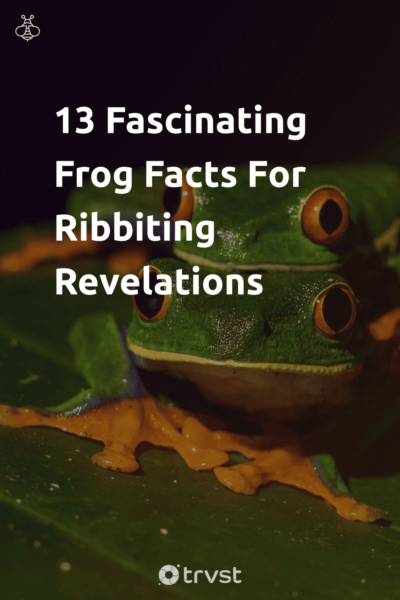13 Fascinating Frog Facts For Ribbiting Revelations
Frogs famously dramatically metamorphosis from egg to tadpole to adult. And, of course, we know them for their hopping prowess. Their powerful hind legs enable them to jump incredible distances. Among the more remarkable frog facts is that some species can even change color through a process called metachrosis to better blend with their surroundings, ensuring their survival in various habitats.
Frogs have a huge range of sizes, colors, and abilities. From the tiny Paedophryne amauensis, barely measuring 7.7 mm, to the colossal Goliath frog stretching up to 32 cm.
Read on to explore the intriguing world of frogs, or click on to our frog quotes for some froggy sayings about these amazing amphibians.
13 Fascinating Facts About Frogs
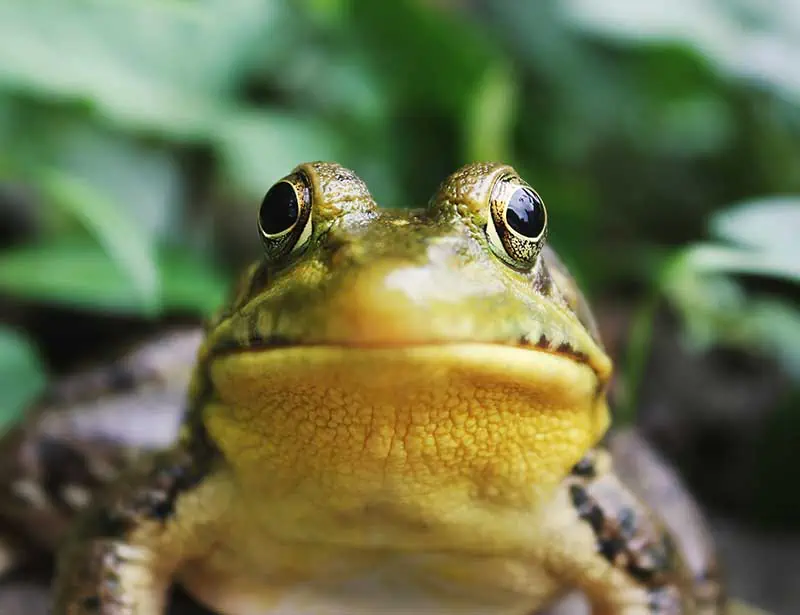
1. There are frogs on every continent except Antarctica
Everywhere you go on planet Earth, you can find frogs, except Antarctica. These adaptable amphibians live in tropical rainforests, temperate woodlands, arid deserts, and high-altitude mountain ranges.
Frogs can be found almost everywhere because of their reproductive strategies and adaptations to ensure their survival across various habitats. For instance, most frogs lay eggs (also called frogspawn) in water.
Frog eggs hatch into tadpoles that undergo a fascinating metamorphosis before transforming into adult frogs. Similarly, some frog species breed in temporary pools, while others find refuge in tree holes. Moreover, some species even thrive underneath leaf litter.
The remarkable adaptability of frogs is evident across over 7000 species. For example, the red-eyed tree frog lives in trees, and the Australian water-holding frog lives in deserts. Frogs thrive in various environments, help control insect populations, and serve as a vital food source for other creatures.
2. Frogs come in various sizes
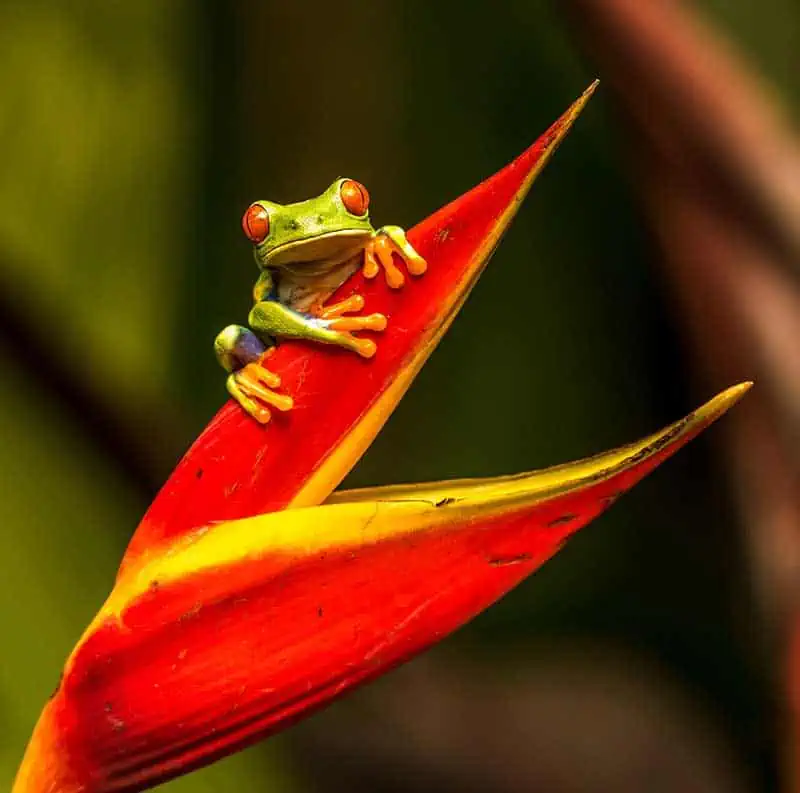
In 2009, scientist Chris Austin of Louisiana State University discovered2 the tiny “pebble frog,” Paedophryne amauensis, the smallest frog in the world. It is one of the tiniest vertebrates on the planet, measuring only 7.7 mm long, about the size of a grain of rice. We can find this frog in Papua New Guinea, where they live under the leaf litter on the forest floor. Interestingly, this tiny frog can produce a distinct high-pitched call that mimics insect sounds.
On the other hand, the Goliath frog (Conraua goliath) is the biggest frog species. This frog's body measures 32 cm long. These frogs live in clear, oxygen-rich waters with rapid currents and rocky floors in Cameroon and Equatorial Guinea.
These colossal amphibians eat insects, crustaceans, and fish. The Goliath frog is also heavy; some individuals weigh as much as 3.3 kg (7.3 lbs), quite surprising given their similar diet to smaller frogs.
3. Frogs can jump up to 20 times their body length
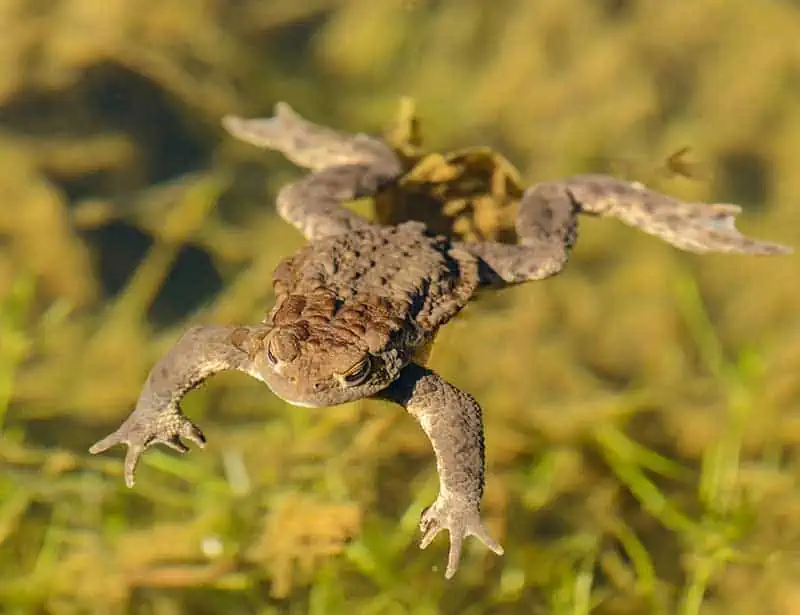
Thanks to their powerful hind legs, some frog species can jump up to 20 times their body length.
Their legs boast elongated bones, from the femur to the fibula, affording them great leverage. Further, their strong muscles help them generate the power to push off the ground while their leg joints make them flexible enough to crouch low and then extend their legs fully while jumping5.
This incredible jumping skill helps frogs survive in the wild. They can quickly leap away from danger, making it harder for predators to catch them. Their agility lets them easily chase and capture insects and small invertebrates, ensuring a steady food supply.
Scientists have long studied frog jumping biomechanics. Their research could inspire advanced robotics and prosthetics developments, particularly in mobility and performance.
4. Some frogs change color for camouflage
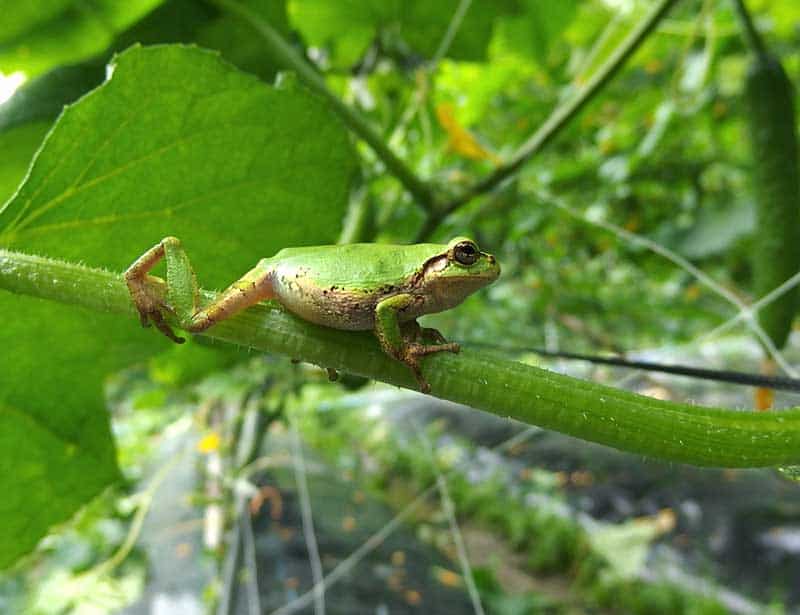
Some frog species can change their colors to blend in with their surroundings in a "metachrosis process.” Besides camouflage from predators, metachrosis also helps them communicate with other frogs and improves thermoregulation1.
Metachrosis is only possible due to frogs’ specialized pigment cells called chromatophores. These cells expand or contract, altering the distribution of pigments and changing the animal’s color and patterns according to environmental triggers like temperature, humidity, or light.
For example, depending on habitat, the Pacific tree frog (Pseudacris regilla) can change color from green to brown. They can blend seamlessly into leaves or tree bark, avoiding predators. Likewise, the Vietnamese mossy frog (Theloderma corticale) can copy the appearance of moss and lichen.
Not all frogs can do metachrosis. Nevertheless, it is an interesting adaptation that helps many frogs thrive in various environments.
5. Each frog species uses unique calls for different purposes
Frogs display various vocalizations tailored to different purposes. For example, male frogs call to attract females during mating season. These males gather around water and start calling out to potential mates; their calls have specific acoustic traits like pitch and intensity that help females identify them individually and assess their quality as mates. For example, the male túngara frog (Engystomops pustulosus) emits a call proclaiming its physical fitness, helping females choose the fittest mates.
Other times, frog vocalizations help them defend their territories from rival frogs. Males call out signals that they occupy a particular area to discourage others from entering. Likewise, these signals can vary in frequency and intensity, depending on the rivals’ location and threat levels. Frogs can engage in physical combat when these aggressive signals don't work.
When a frog feels threatened, it can use distress calls to warn others of potential threats from predators or other dangers. These calls also vary in pattern and frequency, signaling the specific threat in their way.
6. Some male frogs carry their young in their vocal sacs
Many species of frogs engage in external fertilization, wherein the male fertilizes the eggs outside of the female's body. During this process, the male holds the female in a "mating hug called amplexus."
Meanwhile, the male Darwin’s frog, Rhinoderma darwinii, native to the forest streams of Chile and Argentina, follows a unique reproductive strategy. Since their habitats don’t have steady water sources for breeding, these frogs have evolved a remarkable way of caring for their young.
Compared to other animals, the male frog protects their offspring after the female lays eggs. When they hatch, after 2-3 weeks, the male frog ingests the tadpoles into its vocal sac, protecting them and giving them a stable environment to grow. As a result, these tadpoles enjoy protection from predators, dehydration, and extreme temperatures.
The tadpoles stay in the sacs for six to eight weeks, relying on nutrients secreted by its walls for nourishment while metamorphosing into adult frogs. Once they fully develop, these tadpoles emerge from the male’s mouth, ready to explore the world without their fathers’ protection.
Fun fact: The female marsupial frog keeps eggs in a kangaroo-like pouch until they are ready to hatch into tadpoles.
7. Frogs can swallow food with their eyeballs
When a frog swallows, it can use its eyes to help it process their food, which is called ocular ingestion. Their long, sticky tongues catch prey like insects or small invertebrates and pull them into their mouths. However, they don’t have teeth, and their jaws are too weak to chew their food.
When the food is in its mouth, the frog closes its eyes and pulls inward, pressing them against the roof of its mouth. This process presses on the prey, helping the frog push it down its throat and into its digestive system. Remarkably, this method allows a frog to eat larger prey without chewing. Frogs also swallow food quickly, preventing the prey from escaping or injuring the frog.
Frogs have evolved this unique ability over millions of years. It is one of many mesmerizing ways nature has allowed animals to survive.
Fun Fact: In Australia, there exists a unique species of frog known as the gastric brooding frog. These amphibians swallow their fertilized eggs. The tadpoles then remain in their stomach for nearly two months before being regurgitated as fully-formed baby frogs. During this incubation period, the mother frog's digestive system stops producing gastric secretions, which could potentially harm her offspring.
8. Some frogs produce natural antifreeze or enter suspended animation
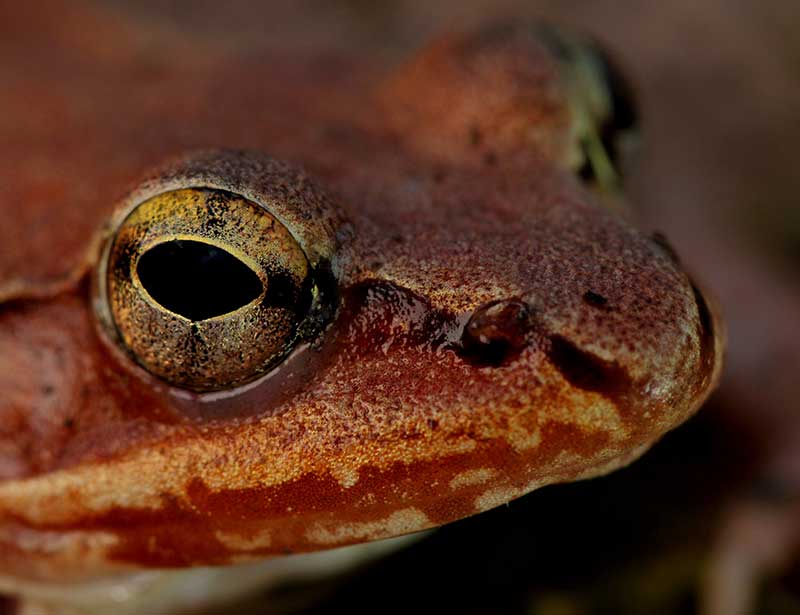
Some frog species can also withstand freezing temperatures. For example, wood frogs (Rana sylvatica) and gray treefrogs (Hyla versicolor) can produce and circulate natural antifreeze-like glucose throughout their body and keep ice from forming within their cells. These frogs spend the winter frozen, and this process enables them to protect their internal organs from damage while their body freezes solid.
These frogs can also enter a torpor or suspended animation when their environment starts to freeze. Their metabolism slows down dramatically, and the wood frog’s body begins to shut down; their heartbeat and breathing might slow down as much as to be undetectable.
Ice forms in the frogs’ extracellular fluids and between tissues during this state. However, their antifreeze compounds prevent the ice from forming within the cells themselves. The frogs’ metabolism gradually resumes when the temperature rises again, letting them return to normal within only a few hours.
This process helps the wood frog and gray tree frog survive in the Arctic and subarctic regions.
9. Glass frogs are translucent
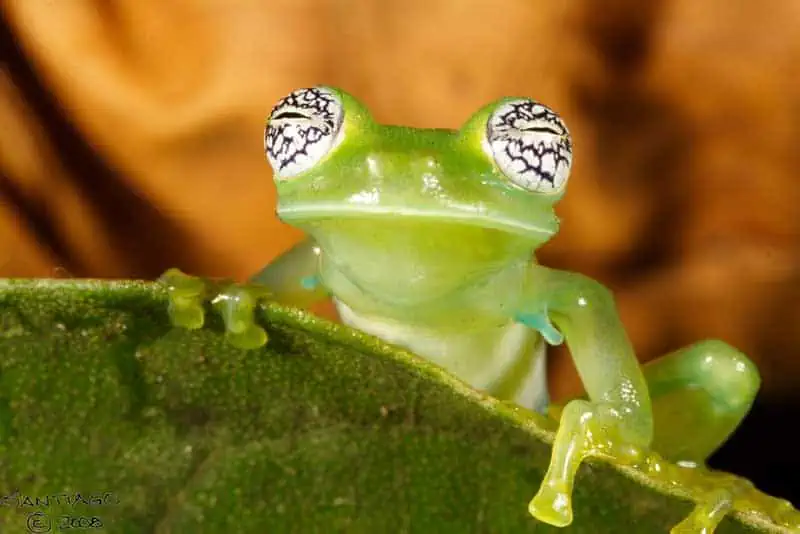
The glass frog, residing mainly in Central and South America's lush rainforests, has garnered attention due to their one-of-a-kind translucent skin. The transparent nature of their abdominal skin is so distinctive that the inner workings of the frog's body, such as the organs, bones, and even the beating heart, are readily visible.
Interestingly, the evolutionary advantage offered by this transparency is the ability to camouflage themselves from potential predators. When resting on the rainforest's leaves, glass frogs blend effortlessly with their surroundings, becoming almost invisible to the untrained eye.
10. Some frogs can moisturize themselves
The waxy monkey frog dwelling in the South American Chaco and Gran Chaco regions' trees boasts an extraordinary waxy secretion that covers its skin, acting as a protective barrier against dehydration in the arid environment. It's a bit like having the ability to produce its own moisturizer.
11. The fear of frogs and toads has its own name
Ranidaphobia, the fear of frogs and toads, is an intriguing psychological phenomenon affecting a notable number of people worldwide. The cultural impact of frogs in folklore, literature, and mythology - where they were often associated with witchcraft, plagues, and malevolent spirits - may contribute to the heightened fear in some individuals.
12. Indigenous peoples coat their blowdarts with poison dart frogs’ toxic secretions
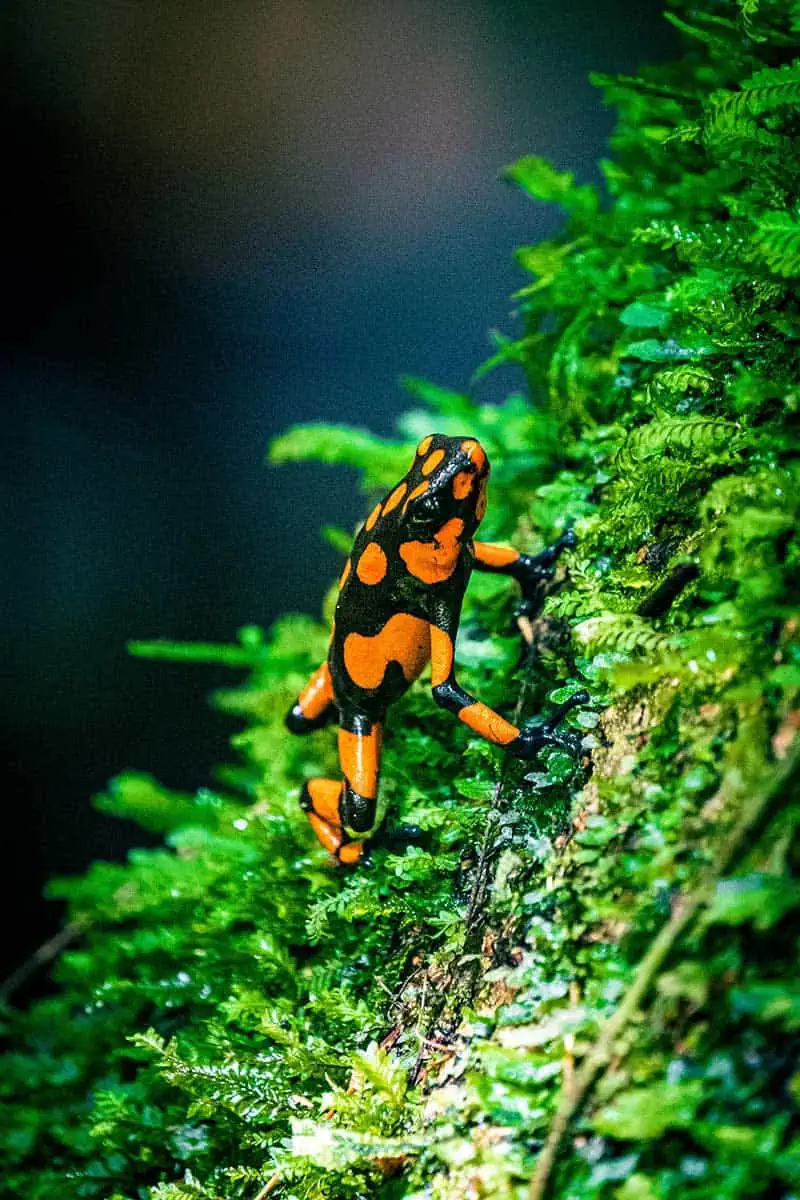
The colorful but deadly poison dart frogs of Central and South America secrete toxins used by the indigenous Emberá and Noanamá tribes in Colombia to hunt for food. Traditionally, these tribes tip their arrowheads and blowdarts in the frogs’ toxins, which help them kill or immobilize their targets from a safe distance.
Hunters rub their weapons directly on the frogs’ skin or heat them over a fire to trigger toxin release. Then, they collect the secretions and apply them to their weapons. Not all poison dart frogs have the same toxin potency, however. For example, the golden poison frog (Phyllobates terribilis) can kill up to ten adult humans.
Remarkably, these poisonous frogs do not produce the toxins themselves. Instead, these toxins accumulate in a dart frog's body through a steady diet of alkaloid-rich insects containing chemicals harmful to other animals4.
These colorful frogs’ toxins target the nervous system, causing paralysis and respiratory failure, often leading to death. The deadly toxins from the golden poison dart frog and other species help indigenous hunters hunt large animals like monkeys and other mammals.
The development of modern hunting techniques has reduced the use of these traditional methods among indigenous people. Still, the relationship between these unique frogs and the ingenious hunters continues to stir the imaginations of scientists and enthusiasts worldwide.
13. Many frog species are threatened by habitat loss, climate change, and the chytrid fungus
Frogs are common and sensitive signs of an ecosystem’s overall health. Unbeknownst to many, many endangered frog species are teetering on the brink of extinction. Today, they face significant threats like habitat loss driven by human activity.
Deforestation, wetland drainage, agricultural conversion, and urban development have destroyed frogs’ habitats by destroying these vast ecosystems and rendering more than 2000 types of frogs endangered species3.
This destruction has left numerous species homeless or fragmented their populations, causing a lower genetic diversity or further vulnerability to other threats.
Similarly, climate change also affects frogs in various ways. This phenomenon shifts precipitation patterns, leading to extreme weather events and higher global temperatures. Since frogs are cold-blooded animals that rely on external heat sources to regulate their body temperatures, they are extra sensitive to changes in their surroundings. As a result, climate change's effects affect their feeding habits, reproductive success, and overall survival.
Moreover, climate change has also helped spread the deadly chytrid fungus, Batrachochytrium dendrobatidis (Bd). After infecting their skin, this fungus prevents amphibians from regulating their water and electrolyte balance, which causes heart failure and mass die-offs.
To help conserve critically endangered frog populations worldwide, people must undertake habitat preservation, disease mitigation research, and global cooperation against climate change. Mark World Frog Day in your calendar, which provides a focal point for reminding ourselves of the importance of our ribbiting friends.
Related: To further explore the animal kingdom, check out some of the other animals that start with F.
| 1 |
Kang, C., Kim, Y. E., & Jang, Y. (2016). Colour and pattern change against visually heterogeneous backgrounds in the tree frog Hyla japonica. Scientific reports, 6, 22601. |
| 2 |
Rittmeyer, E. N., Allison, A., Gründler, M. C., Thompson, D. K., & Austin, C. C. (2012). Ecological Guild Evolution and the Discovery of the World's Smallest Vertebrate. PLOS ONE, 7(1), e29797. |
| 3 |
Stuart, S. N., Chanson, J. S., Cox, N. A., Young, B. E., Rodrigues, A. S., Fischman, D. L., & Waller, R. W. (2004). Status and trends of amphibian declines and extinctions worldwide. Science, 306(5702), 1783-1786. |
| 4 |
Saporito, R. A., Donnelly, M. A., Norton, R. A., Garraffo, H. M., Spande, T. F., & Daly, J. W. (2007). Oribatid mites as a major dietary source for alkaloids in poison frogs. Proceedings of the National Academy of Sciences, 104(21), 8885-8890. |
| 5 |
Astley, H. C., & Roberts, T. J. (2014). The mechanics of elastic loading and recoil in anuran jumping. The Journal of experimental biology, 217(Pt 24), 4372–4378. |
Mike is a degree-qualified researcher and writer passionate about increasing global awareness about climate change and encouraging people to act collectively in resolving these issues.
Fact Checked By:
Chinny Verana, BSc.

